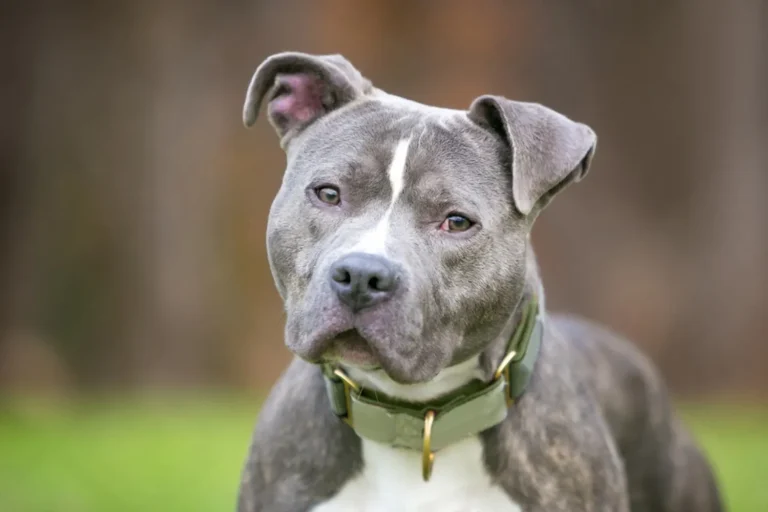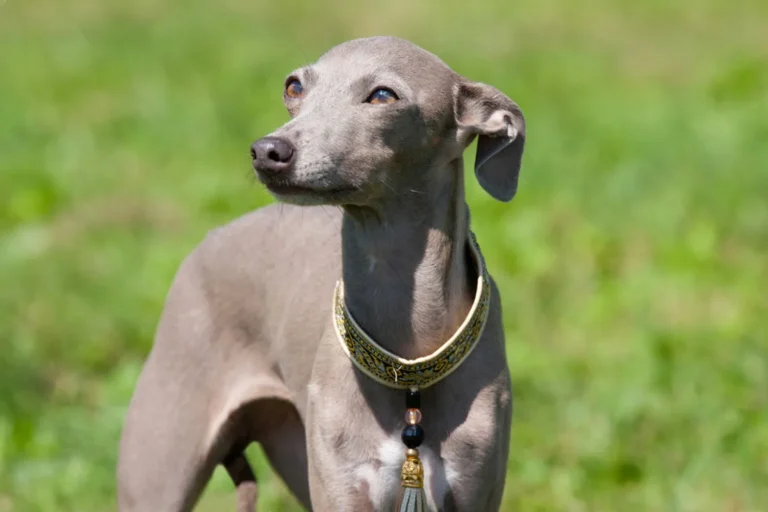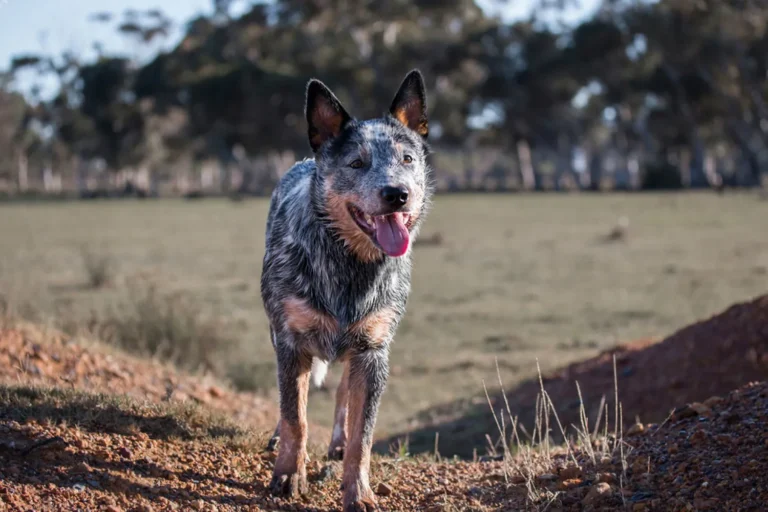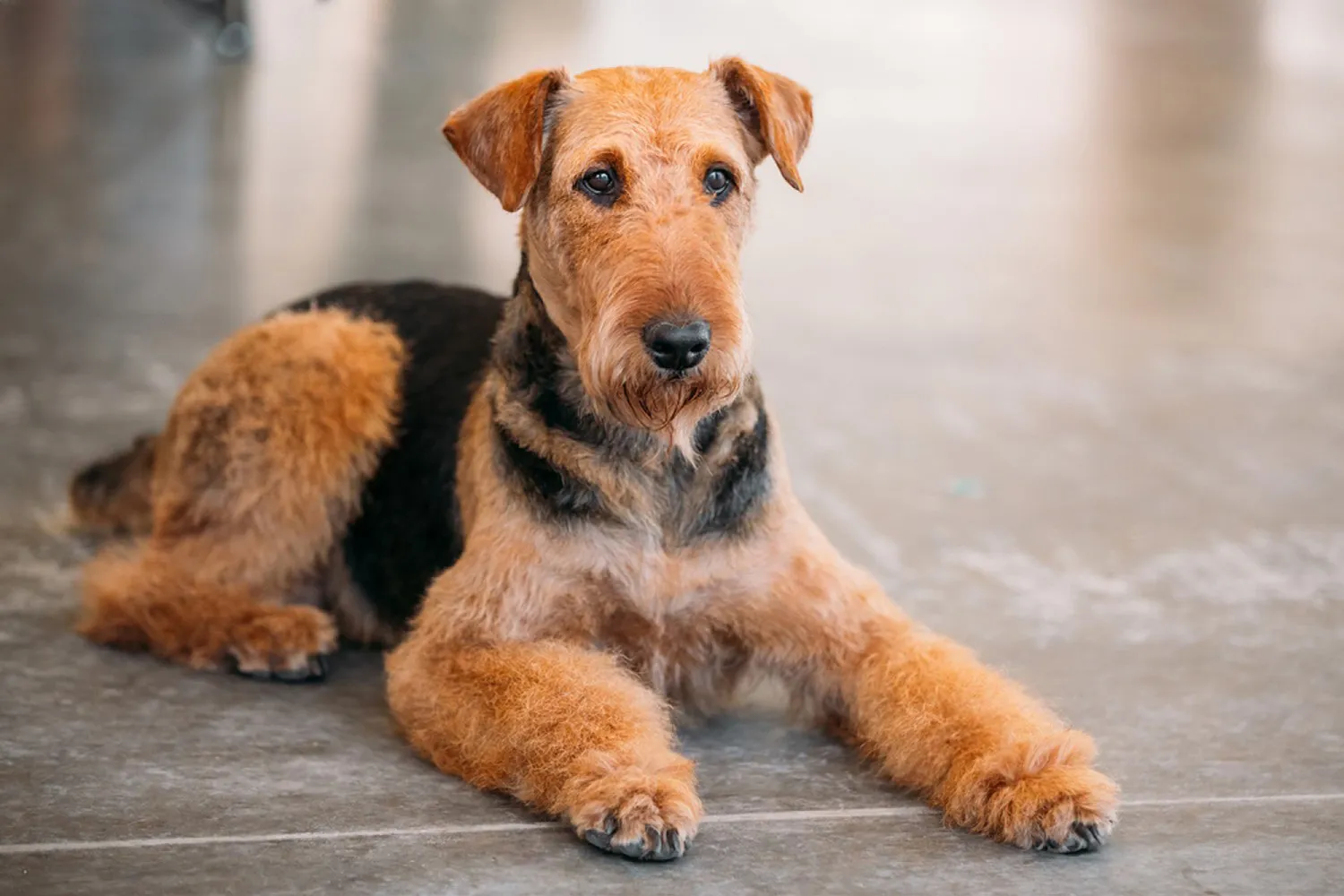
The “King of Terriers” didn’t get that royal nickname for nothing. As the largest of the terrier breeds, the Airedale has a presence that turns heads and apparently wins over celebrities, too. John Wayne and Geri Halliwell both fell for their bold charm. And then there’s Paddy the Wanderer, the legendary Airedale of Wellington, New Zealand, who trotted the waterfront making friends with taxi drivers and sailors like he owned the town. Classic Airedale behavior: curious, confident, and always in the middle of the action.
Living with an Airedale feels a bit like rooming with a witty, bearded comedian who secretly doubles as an athlete. They’re clever and independent, which is a fabulous combo if you enjoy training games and daily adventures. A friend’s Airedale once learned how to open the pantry only to proudly parade around with a bag of oats as if he’d won Best in Show. My best advice? Give them a job before they invent one. Long walks, scent games in the yard, and puzzle toys go a long way. Keep training upbeat and consistent, and teach a rock-solid recall and “leave it” early they love a chase, so a secure fence is your friend. That wiry coat does need upkeep: regular brushing and either hand stripping or clipping, plus a quick towel for the famous wet beard after water breaks. If you appreciate a dog with brains, swagger, and a big heart, the Airedale wears the crown well.
History and Origin of the Airedale Terrier
If you trace the Airedale’s story back to its roots, you end up in Bingley, tucked in the Aire Valley of Yorkshire what Arthur Bothwell Proctor fondly called “the cradle of the breed” in his introduction to The Complete Story of the Airedale Terrier. I remember standing by a slow bend of the River Aire on a drizzly morning and thinking, yes, this is Airedale country: rugged banks, cold water, and a landscape that rewards a dog with grit and curiosity.
Ferguson Marshall Jowett, the book’s author and a terrier breeder and judge born in Airedale, grew up watching his father shape the dog we know today. The recipe was clever and practical: cross English wire haired black and tan terriers with Otter Hounds to create a bold, versatile dog that could hunt vermin on land and splash after quarry in the water. Those early dogs were called Waterside or Bingley terriers hardworking, no nonsense, and built for the riverside life. Jowett and Proctor point to Champion Cholmondeley Briar as the patriarch of that line, the dog that stamped the look and attitude so many of us recognize. The first published illustration of the breed popped up in 1879; I once spotted a similar old engraving at a flea market, and even in that faded print you could see the square jaw and “let’s go” stance.
Recognition followed quickly. The Kennel Club of England first acknowledged the Airedale Terrier in 1886, and the breed was soon on the move arriving in Australia in the 1890s. An Australian friend told me her grandfather swore by his Airedale on the station: a watchdog at night, a helper by day, and a clown whenever someone left their lunch unattended. By 1949, the American Kennel Club listed the Airedale as the 20th most popular breed in the United States. Over time, though, their numbers dipped as German Shepherds stepped into many of the jobs Airedales once did.
What never faded is the Airedale’s reputation for toughness and heart. During the World Wars, many served as messengers, slipping through chaos with notes in collar canisters. I once saw a museum photo of an Airedale muddy to the ears, eyes bright, ready for another run it’s hard not to feel proud of them. That wartime grit lives on in the modern dog: tenacious, clever, and eager to be part of whatever you’re doing. There’s a reason people still call them the “King of Terriers.”
If you bring an Airedale into your life, remember where they come from. Give them jobs nose work, fetch in a shallow stream, a weekend hike with a pack. They’re happiest with a plan. I learned quickly that an underworked Airedale will invent employment, like reorganizing your sock drawer or “guarding” the compost bin. Channel that old Waterside work ethic, and you’ll have a companion who can make a rainy walk feel like an adventure along the Aire all over again.
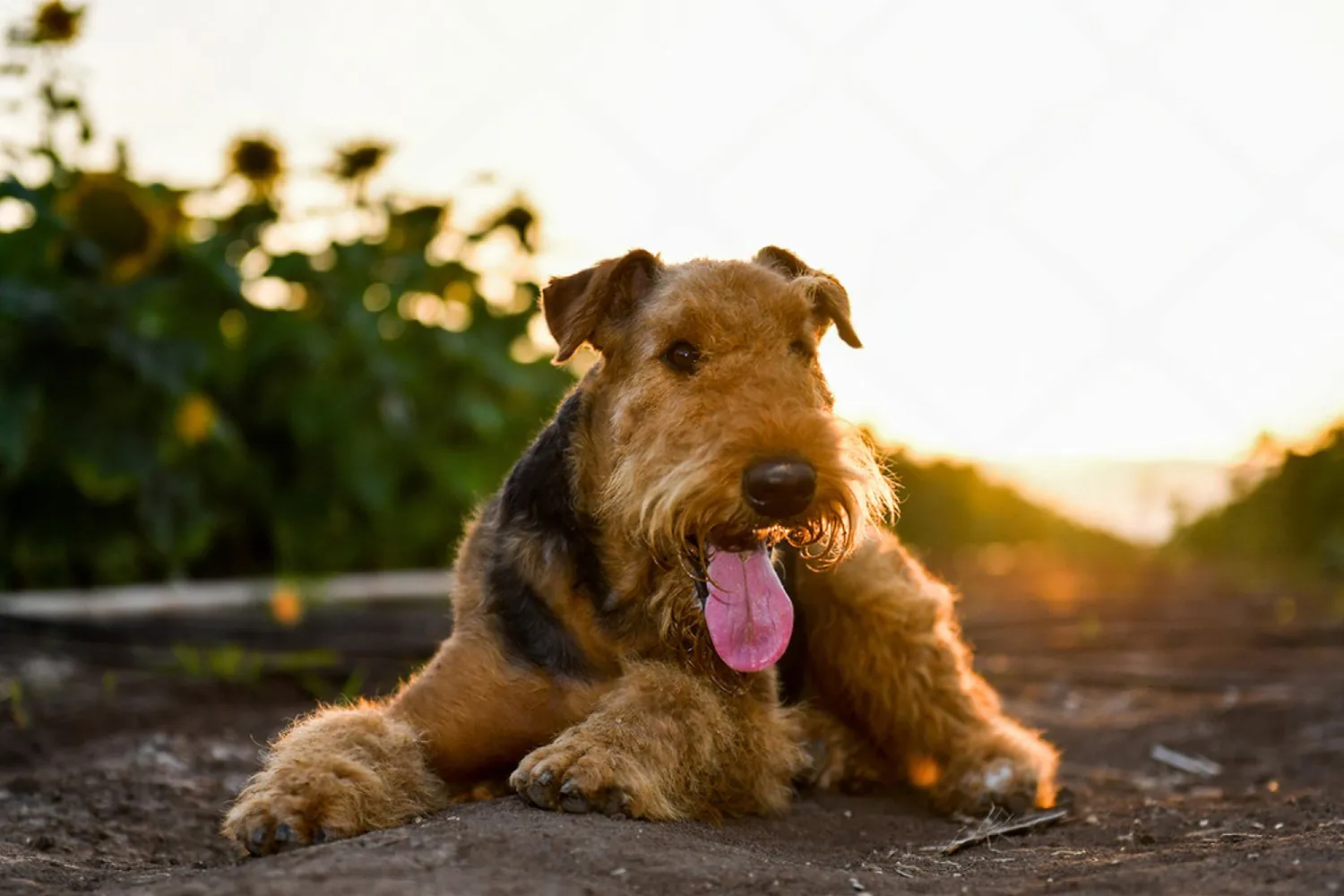
What Is an Airedale Terrier?
Long before they were backyard goofballs stealing socks, Airedales had serious jobs. Lines like the famed Cholmondeley Briar and his progeny were bred as versatile working, hunting, and sporting dogs and still curled up with the family at night. As Jowett describes, these dogs would stay home to look after wives and children, then join the men by the hearth and head out with the hounds when it was time to hunt. I always picture an Airedale trotting from cradle to coat rack like a proper little sentinel, making sure everyone is where they should be.
That old spirit hasn’t faded. Airedales are sharp, independent thinkers who can guard, work search and rescue, or even move cattle when asked. In everyday life, that means they like to have a job anything from scent games in the yard to learning new tricks. Short, upbeat training sessions keep their brains busy, and a sturdy recall is worth its weight in biscuits. My friend’s Airedale once opened a gate latch to bring me his favorite ball clever, hilarious, and a good reminder to secure the yard. If you enjoy an intelligent partner who thrives on activity and purpose, an Airedale will meet you there, wagging and ready for the next adventure.
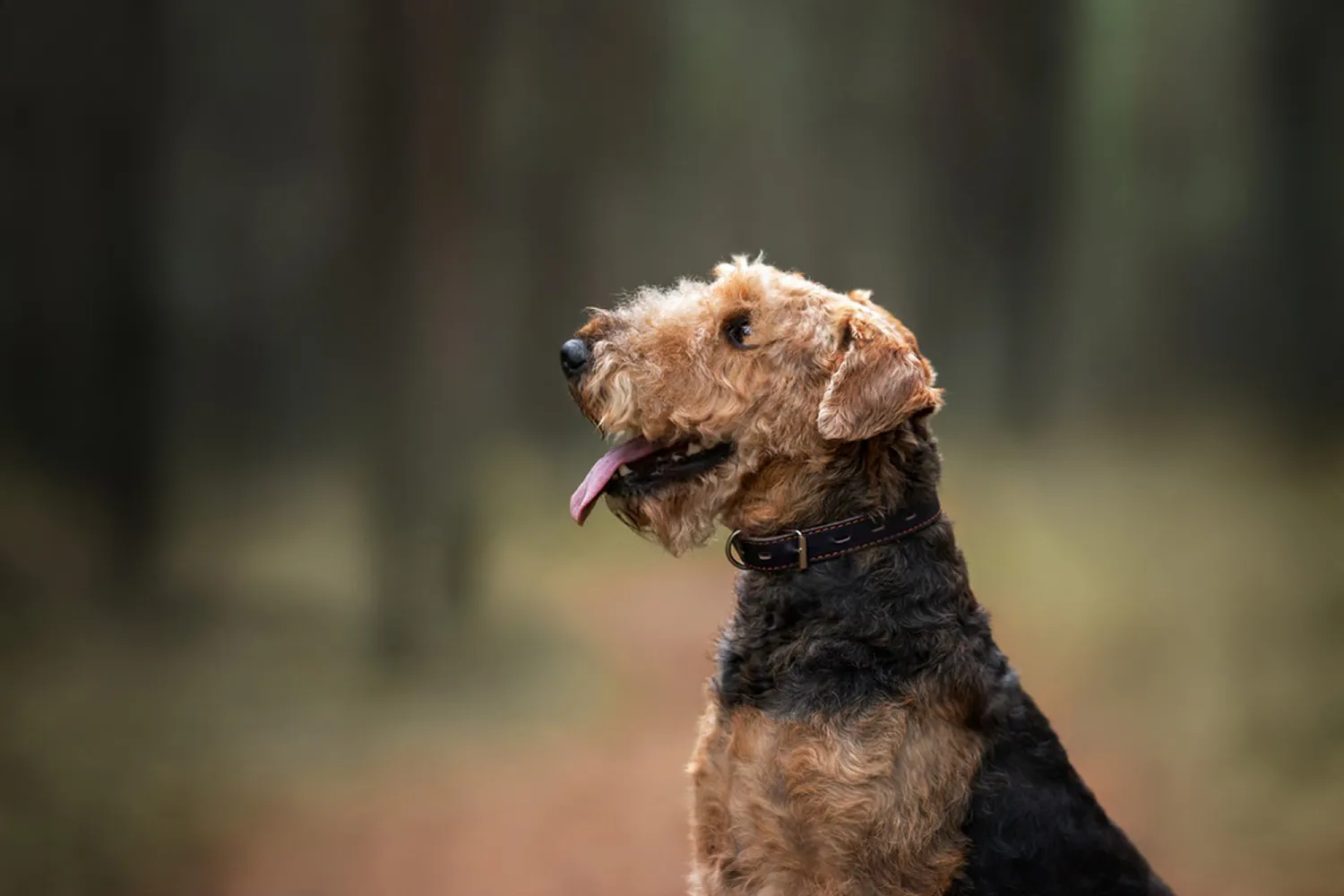
Who Are Airedale Terriers Best For?
If your household is lively, playful, and up for a bit of mischief wrapped in smarts, an Airedale might fit right in. They thrive with families who enjoy being active think weekend hikes, backyard games, and a good dose of training disguised as fun. With kids, they’re typically wonderful: affectionate, goofy, and always ready for a game of chase. I always tell friends to teach children how to give clear cues and gentle pets; it helps channel that big personality in the right direction.
Despite their clownish charm, they’re natural protectors. An Airedale will adore their people and keep an eye on the home base. My neighbor’s Airedale, Molly, used to do a quick “patrol” of the living room windows before curling up by the sofa like she’d finished her shift. That loyal, watchful streak is real just be sure to guide it early so it doesn’t tip into bossiness with guests or other dogs.
They’re bright and busy, so mental exercise is as important as a good walk. If you work away from home and your little Bingley terrier (as old timers sometimes call them) gets needy, consider puppy daycare, a dog walker, or a trusted friend for midday play. Puppy classes are gold for socialization and structure. Mix in puzzle feeders, scent games, and short training bursts five minutes of “find it,” a few sits and downs, maybe a silly trick and you’ll have a happy, well mannered companion who’s ready to nap at your feet after a job well done.
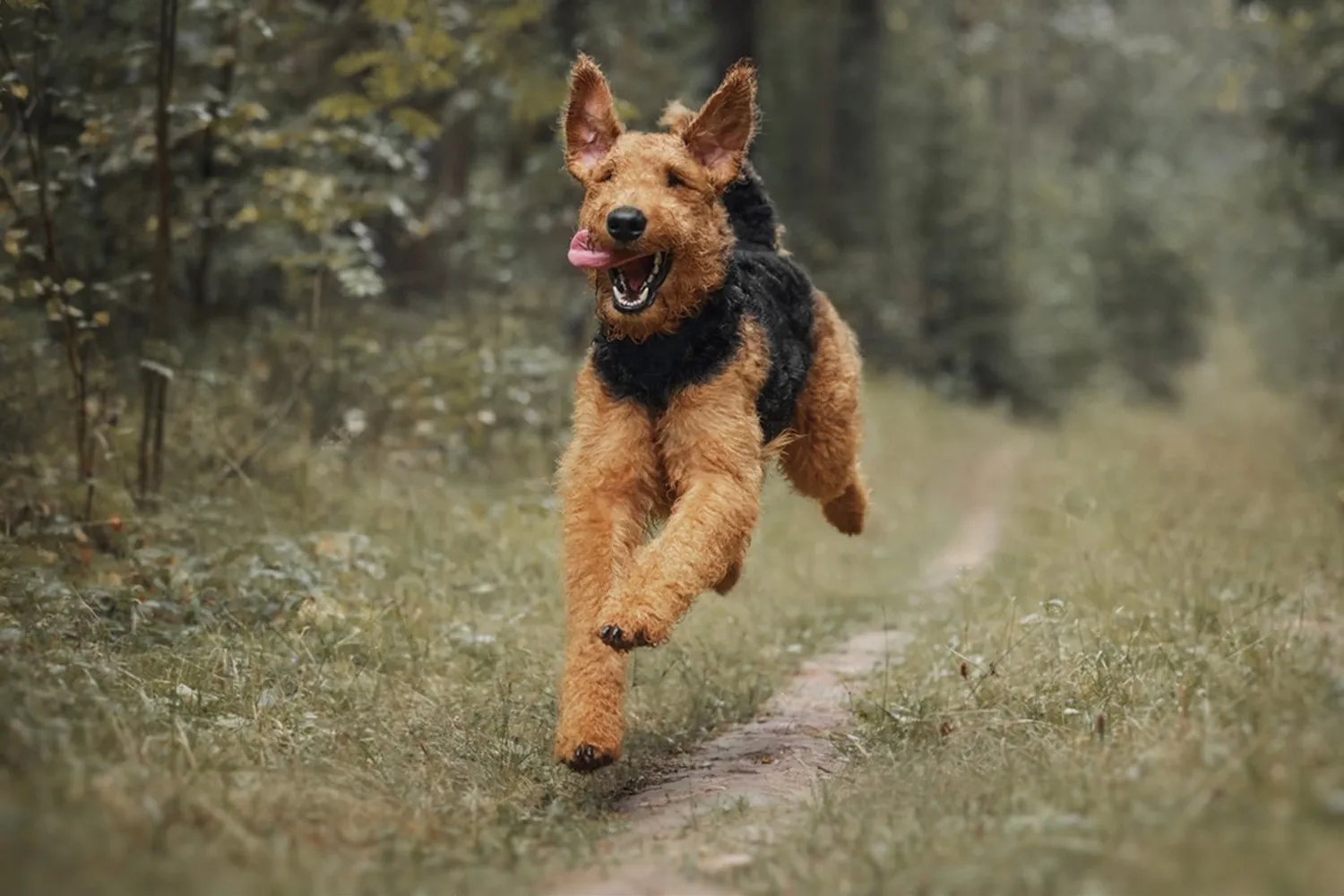
Airedale Terrier Grooming & Shedding
That famous Airedale coat is a two layer outfit: a wiry topcoat over a soft undercoat that needs a little routine to stay sharp and comfy. I like to make brushing a weekly ritual coffee for me, a stuffed chew for my dog and I use a slicker brush with a light wrist so I don’t scratch the skin. After a once over, I run a metal comb through the legs, chest, and that glorious beard to catch any sneaky tangles. The “furnishings” on the legs and face pick up burrs like magnets; I learned the hard way after a muddy hike when I spent twenty minutes combing out tiny twigs.
Airedales aren’t big shedders, but they do release some hair. Regular brushing keeps the tumbleweeds down and the coat looking tidy. If you love that crisp, terrier texture, ask a pro groomer about hand stripping every few months it helps maintain color and wire. I tried hand stripping once and decided it’s a skill best left to people with stronger thumbs; my groomer did it while my Airedale snored on the table like a champ.
Bathing every 2 to 3 months is usually plenty. Use a mild dog shampoo and always brush before a bath so you’re not washing tangles in. If your Airedale finds a muddy puddle (and mine always does), a plain water rinse between baths helps. Towel dry and finish with a cool setting on the dryer so the coat doesn’t get frizzy. I pop a little cotton in the ears during baths to keep water out, then remove it right after.
Nails need a trim about once a month if you hear clicking on the floor, it’s time. I keep styptic powder handy and take tiny slivers off black nails to stay safe. While you’re there, check the paw pads and the hair between toes; a quick tidy can prevent slipping. Ears should get a weekly peek and a gentle wipe with a vet approved cleaner, especially since those folded ears can trap gunk. And don’t forget the beard keep a towel near the water bowl for “soup beard” moments.
For dental health, brushing teeth a few times a week makes a big difference. Start with a finger brush and dog toothpaste, and reward like crazy. In fact, start the whole grooming routine early and make it fun. I taught a “chin rest” cue so my Airedale gently rests his head in my hand for combing the face game changer. A non slip mat, a jar of treats, and a calm voice turn grooming from a chore into quality time, and that bond you build? Worth every brush stroke.
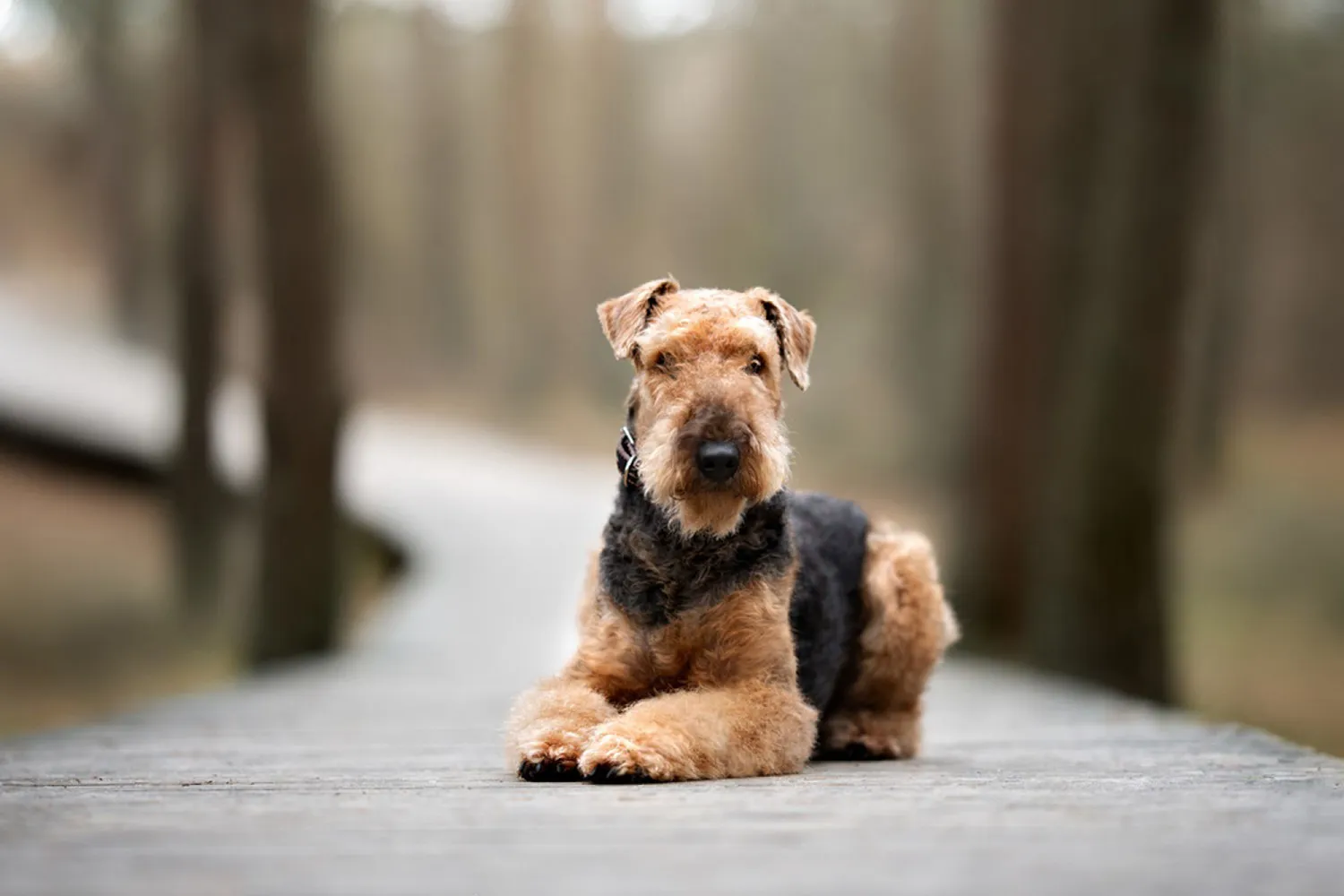
Do Airedale Terriers Bark a Lot?
With an Airedale in the house, you get an intelligent watchdog, not a nonstop noisemaker. Once they’ve had solid puppy classes and consistent manners at home, their voice is pretty deliberate. They speak up for specific reasons usually to tell you someone’s at the door, something moved near the fence, or there’s a strange thump in the night. My friend’s Airedale, Daisy, will snooze through the mail truck, but if the side gate clicks, you get one firm “Hey, check that!” and then she’s back on her rug.
These dogs aren’t nuisance barkers, and that’s no accident. Airedales are sharp, observant, and bred for real jobs. Many were trained as underground messengers, guards, or police dogs roles where random yapping would’ve been a disaster. They needed to read the room and use their voice with purpose. I once watched an Airedale in a scent class calmly work the whole room, then give a single, confident bark when she found the target tin. Efficient and polite, like a canine doorbell.
If you want that same poise at home, start early: socialization, puppy classes, and a few handy cues like “quiet” and “thank you” go a long way. Reward calm, and give their big brain a job sniff walks, puzzle feeders, hide and seek with toys. A tired, engaged Airedale has less to “comment” on. Manage windows if your street is busy, and practice peaceful greetings so doorbells don’t become concerts. And if barking suddenly ramps up, look for a reason first new noises, wildlife, or just needing an extra walk. With a bit of structure, you’ll have a reliable early warning system, not a neighborhood troubadour.
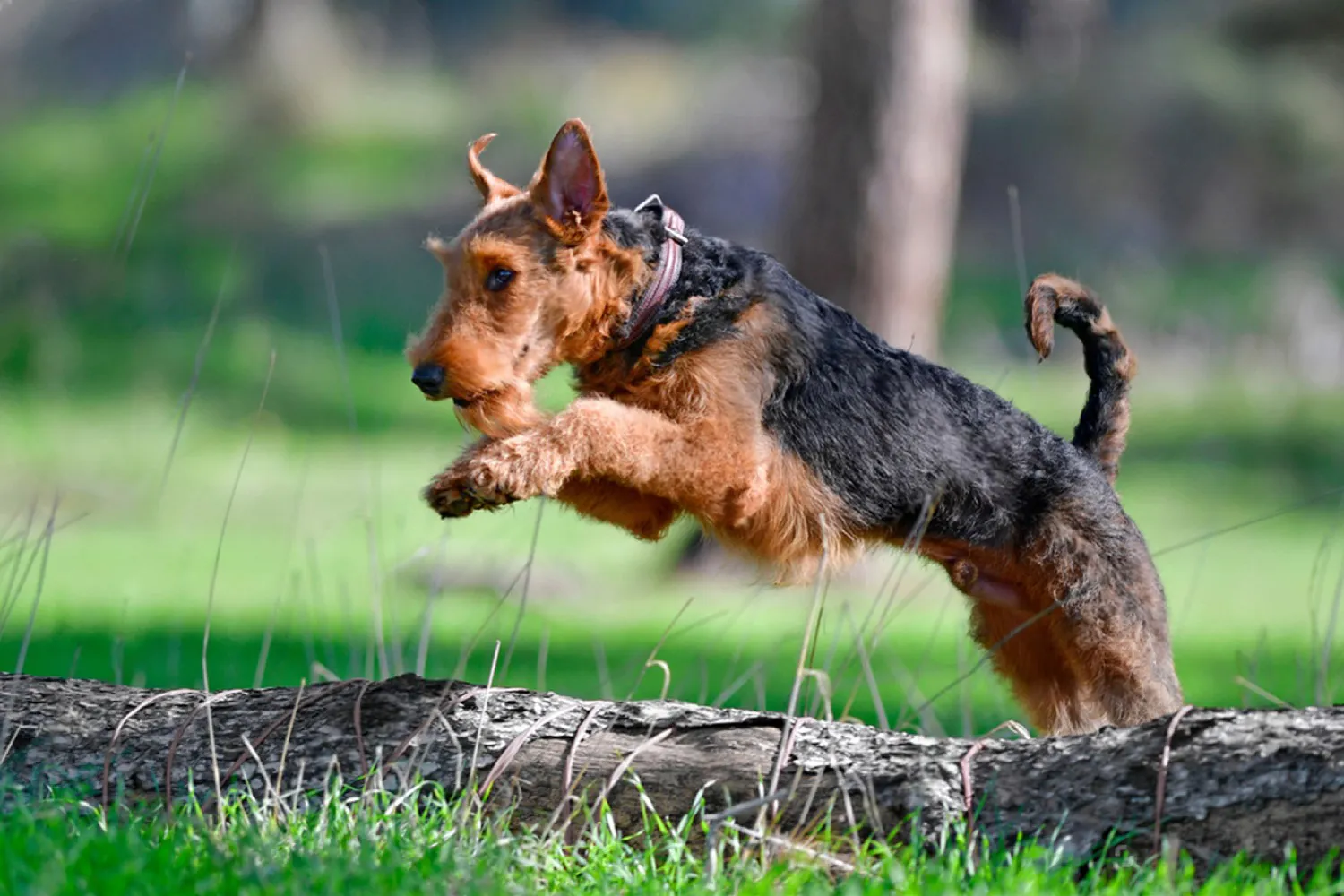
Average Weight and Height of Airedale Terriers
Airedales are solid, leggy terriers with a proud stance. Standard males typically stand about 58-61 cm at the shoulder (roughly 23-24 inches), while females are a touch shorter at 56-59 cm (about 22-23 inches). When I first measured my Airedale, I learned the “shoulder” means the withers the highest point where the neck meets the back so use a wall and a book to get a straight line, then measure down.
Weight wise, females generally sit around 18 kg (about 40 lbs), and males can weigh up to 29 kg (around 64 lbs). That’s a normal spread for the breed, and build matters some Airedales are more athletic and rangy, others a bit stockier. My friend’s boy topped out at 27 kg during his hiking heyday, while my foster girl hovered around 19 kg and was all wiry muscle under that fluffy coat.
A quick tip: their dense fur can make them look heavier than they are, so go by feel as much as sight you should be able to feel ribs with light pressure and see a slight waist. For weighing at home, I step on a scale alone, then with the dog, and subtract. And if yours is still a youngster, expect them to gain height first and “fill out” between 12-18 months, so don’t panic if they look like gangly teenagers for a while.
https://en.wikipedia.org/wiki/Airedale_Terrier
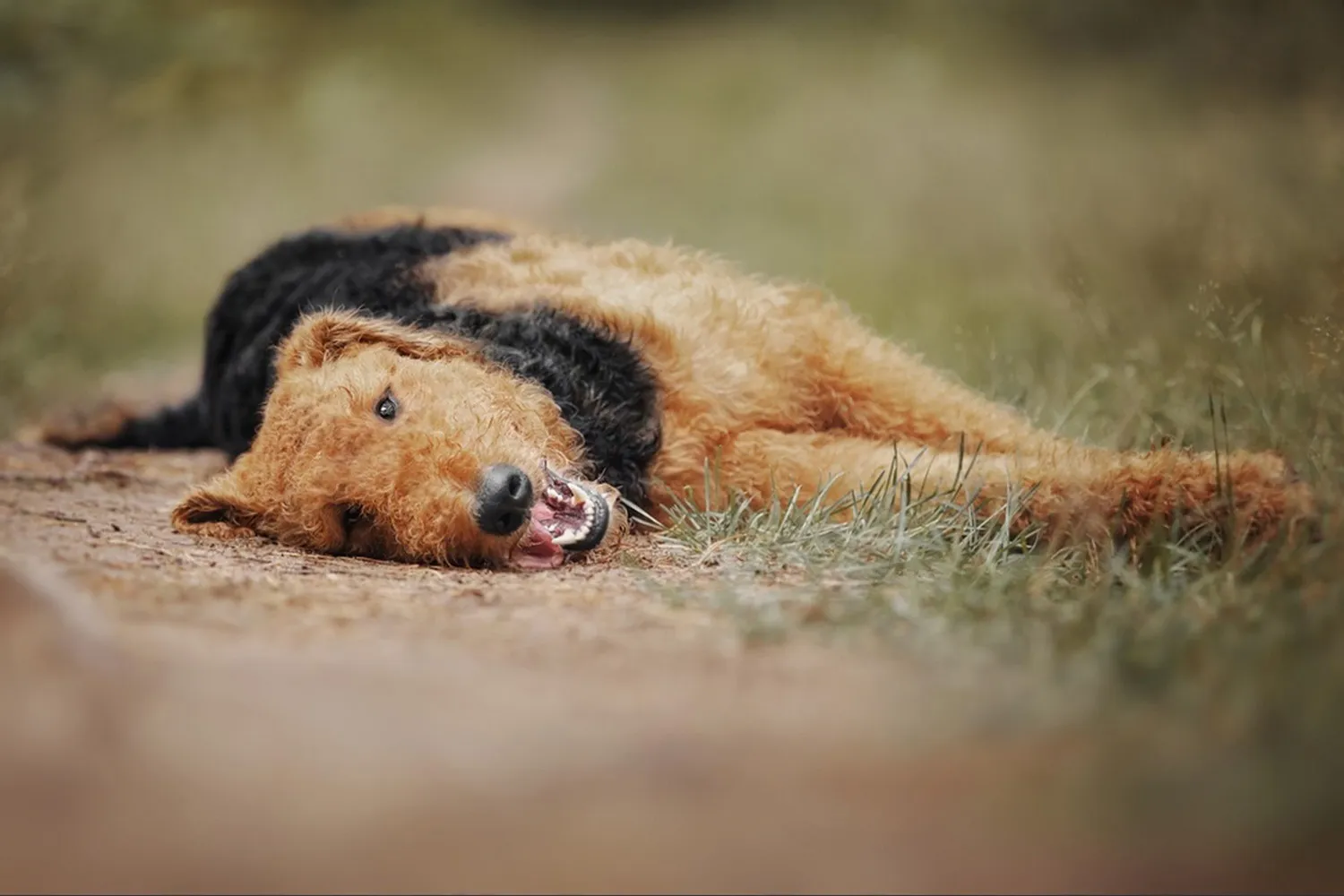
Are Airedale Terriers Easy to Train?
Airedale Terriers are whip smart, and that brainpower can make training feel surprisingly smooth for most owners. The trick is to keep things upbeat and consistent. My Airedale picked up “sit” in a single afternoon, then gave me that classic terrier look that said, “Okay, what’s next?” They love a challenge, so if you bring energy and clear guidance, they’ll meet you there. Obedience classes are a great idea too not just for the dog, but for us humans. The first group class I took taught me better timing with rewards and how to keep training playful instead of repetitive.
Start early. The sooner you work on basics and social skills, the easier life becomes. Puppy kindergarten, calm introductions to new people and places, gentle handling of paws and ears these habits stick. Keep sessions short and fun, and use high value treats or a favorite toy. I like to mix in little games: a quick round of “find it” after a solid “stay” makes even impulse control feel like a party. And don’t be shy about refresher classes as they grow; terriers enjoy showing off what they know.
Airedales also need their minds worked just as much as their legs. Puzzle feeders, snuffle mats, and toys that get harder over time are perfect for this “Tan Terrier.” I started with a simple Kong, then graduated to puzzles with sliding panels and two step releases. On days when we skipped vigorous exercise, I paid for it once I came home to what looked like a snowstorm of shredded paper towels. A good routine helps: brisk walks or a run, a game of fetch with rules, a flirt pole session, and a few sniff and search games to wind down. Rotate toys so they feel new, and if you’ll be out for a while, plan a dog walker or a daycare day.
Bottom line: Airedales are easy to train if you pair their intelligence with consistency, early socialization, and plenty of mental and physical outlets. Keep it lively, keep it kind, and you’ll have a clever partner who’s eager to learn and far too busy to redecorate your living room.
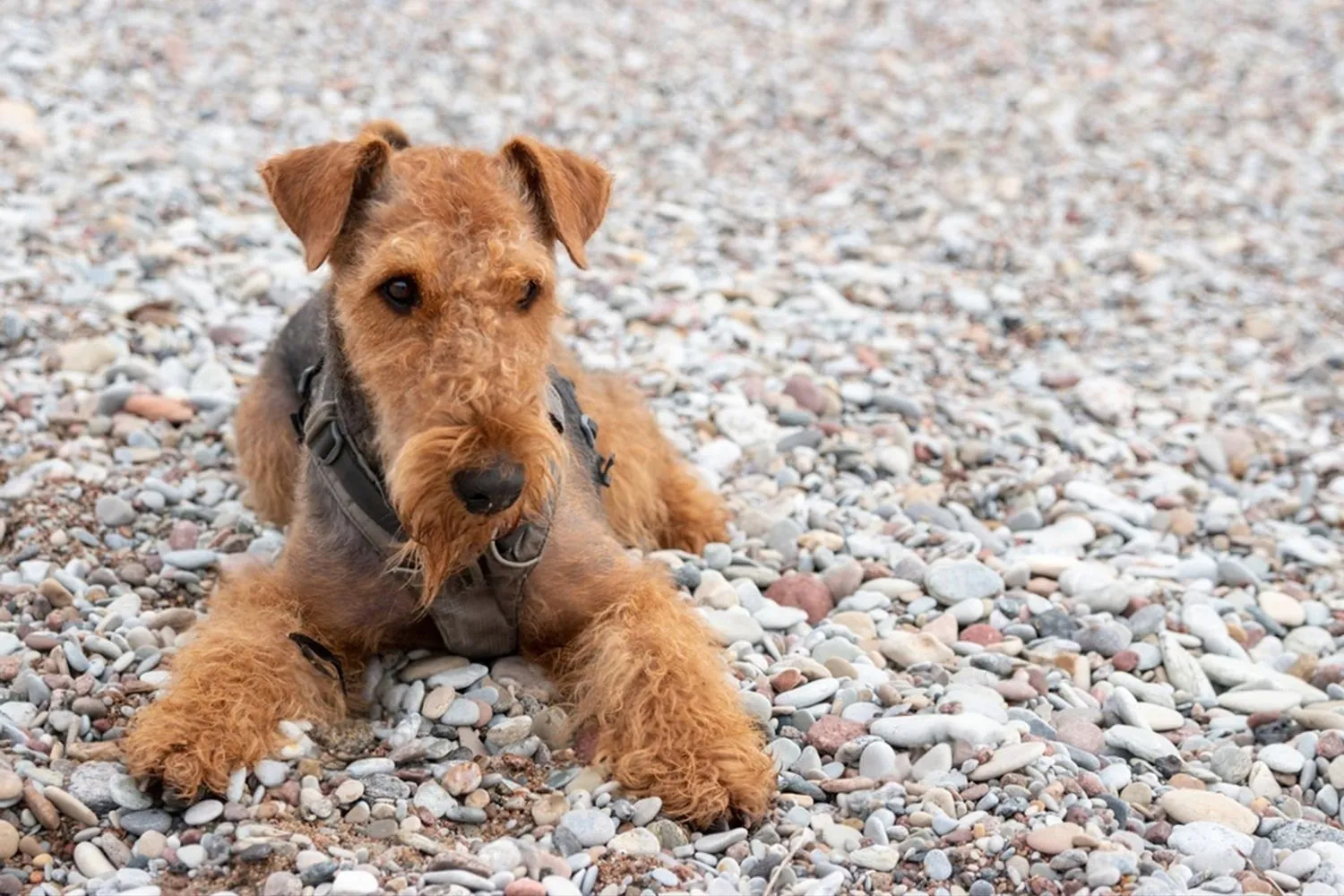
How do Airedale Terriers behave? A look at their temperament and personality
The Airedale Terrier may have sporting roots, but these days they’ve really settled into the role of beloved companion with a wonderfully sunny outlook on life. The ones I’ve known are alert from the moment their paws hit the floor in the morning, scanning the room like they’ve got a to do list: greet everyone, find the squeaky toy, check the yard for imaginary squirrels. They’re friendly without being pushy, confident without being rude, and that courageous, fearless streak shows up as a steady, “I’ve got this” attitude in new situations.
They’re also wickedly smart. Airedales pick up training cues fast, and they’re happiest when their brains are busy. Obedience and agility suit them perfectly; I once watched a neighbor’s Airedale nail a jump sequence, then look back with this mischievous grin like, “What’s next?” If you’re game for tricks, scent games, or puzzle toys, they’ll rise to the occasion. A breeder I chatted with at a local show told me their lines were carefully selected for biddability and nerve, which explains that blend of loyalty and playful spark.
As family dogs, they’re devoted and fun loving great playmates for kids who know how to be gentle. My advice: start socialization early, keep training upbeat and consistent, and plan on daily exercise that’s more than a slow stroll. A brisk hike, a game of fetch, then a cozy snuggle on the couch fits the bill. Give an Airedale a job to do and a person to adore, and you’ll have a clever, courageous companion who keeps life interesting in the very best way.

Do Airedale Terriers Have Common Health Issues?
Airedale Terriers are sturdy, cheerful dogs, and most of the ones I’ve known have lived active, happy lives. Still, like any breed, they have a few health quirks worth keeping an eye on so you can catch things early and keep your pup feeling their best.
Hip dysplasia can crop up in Airedales. It’s when the hip joint doesn’t fit quite right, which may lead to arthritis as they age. Keeping your Airedale lean, building muscle with steady walks and swimming, and avoiding lots of high impact jumping especially while they’re still growing can make a big difference. I keep rugs on slippery floors and use a ramp for the car; my old guy’s hips thanked me for it.
Allergies are another frequent flyer. They can show up as itchy skin, ear issues, or tummy troubles. If your Airedale licks their paws, scratches a lot after walks, or has recurring ear gunk, talk to your vet about possible environmental or food triggers. During spring pollen season, I wipe paws and bellies after walks and it’s cut down the itch fest in my house.
Hypothyroidism sometimes sneaks in too. Signs can be weight gain despite normal meals, a thinning coat, flaky skin, or a low energy mood. A simple blood test can check thyroid levels, and if needed, medication usually helps them bounce back. I once suspected “middle age laziness” when it was actually thyroid related lesson learned.
Progressive Retinal Atrophy (PRA) affects the eyes and can lead to gradual vision loss. Often the first sign is hesitancy in low light or bumping into things at dusk. If you notice that, your vet or a veterinary ophthalmologist can evaluate. Dogs adapt amazingly keeping furniture in the same places and using routine verbal cues helps a ton.
Umbilical hernias are relatively common. They look like a small, soft bump at the belly button. Most are harmless and often repaired easily during a spay or neuter. A friend’s Airedale had hers fixed at six months and never looked back.
Von Willebrand’s disease is a bleeding disorder that affects clotting. It’s something your vet should know about before any surgery or dental work. Good breeders screen for it, and your vet can advise on testing if there’s any concern.
Hemorrhagic gastroenteritis (HGE) is the one I always flag as urgent. Sudden vomiting, bloody diarrhea, and fast dehydration mean you should head to the vet the same day. It can look dramatic, but prompt care usually gets them through it. I keep an emergency kit and my vet’s number on the fridge for exactly this reason.
And like many breeds, Airedales can be at risk for certain cancers, especially as they get older. Do a monthly nose to tail check during grooming feel for new lumps, watch for coughing that lingers, unexplained weight loss, or changes in appetite. Early detection truly helps.
A few simple habits go a long way: regular vet checkups, a balanced diet, steady exercise, and keeping them at a healthy weight. Ask your vet about breed appropriate screenings (hips, eyes, thyroid), and keep notes on any changes you spot. Do that, and you’ll stack the odds in favor of a long, tail wagging Airedale life.
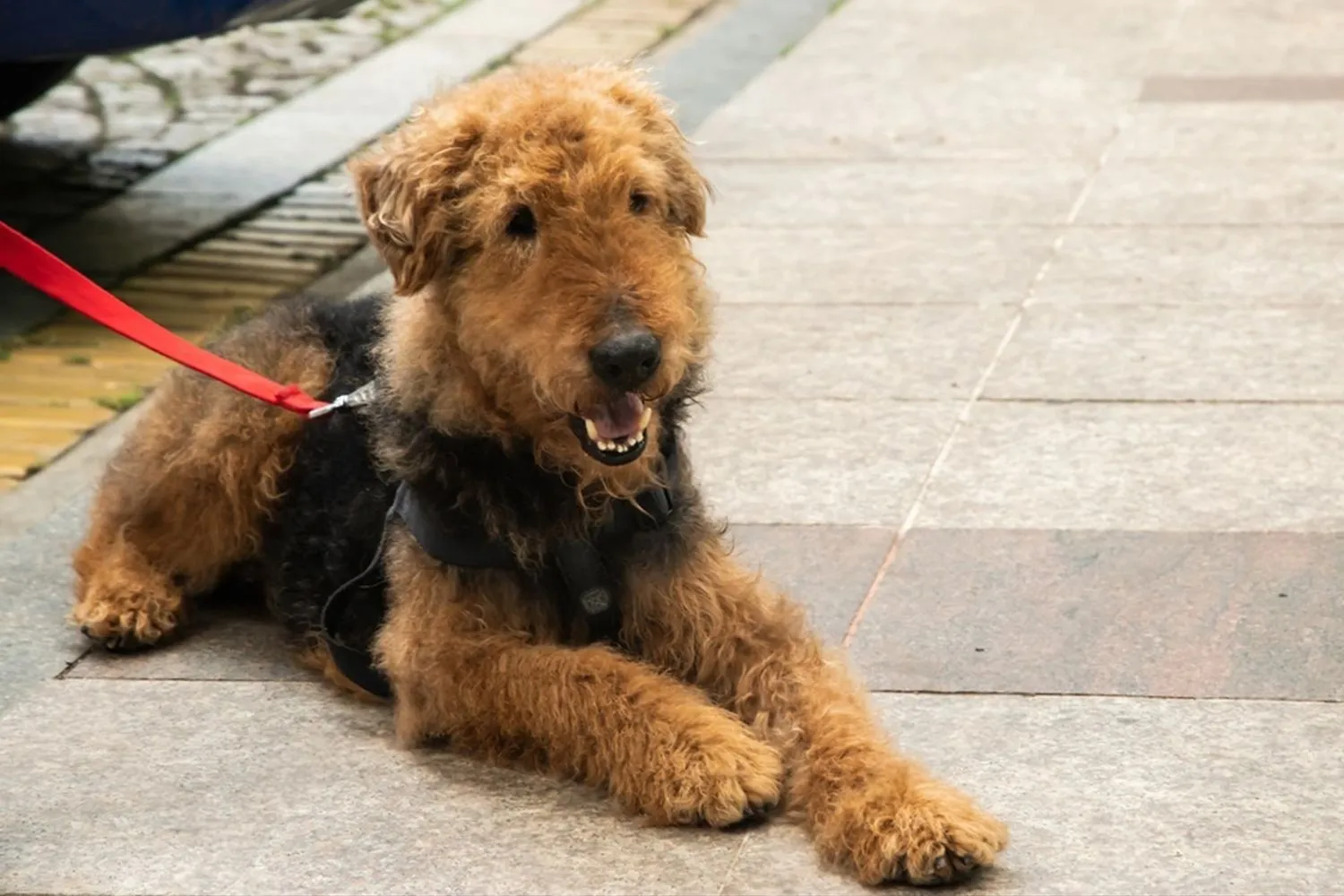
What Is the Lifespan of an Airedale Terrier?
Most healthy, well cared for Airedale Terriers live about 10-12 years. That’s the sweet spot for the “King of Terriers.” My old Airedale, Murphy, made it to a very dignified 12 and a half, still patrolling the backyard like it was his kingdom. Some Airedales stretch a bit longer into their teens, and some say goodbye a little sooner just like people, every dog’s journey is unique. What you can do is focus on making those years as happy and comfortable as possible.
Good care really does make a difference. Keep your Airedale lean with a balanced diet and steady exercise these dogs thrive on brisk walks, playful fetch sessions, and nose work games that let them use that curious terrier brain. I used to hide treats in cardboard boxes and let Murphy “investigate” like a tiny detective; it kept him sharp and tired in the best way. Regular vet checkups (once a year when they’re younger, often twice a year as they age), dental care, and staying on top of grooming help you catch little issues early. Airedales can be prone to things like hip dysplasia, skin allergies, and thyroid bumps in the road, so keeping an eye on weight, joints, and skin is worth its weight in gold. If your vet suggests joint support or a tweak in diet, it’s usually a smart move.
As the senior years roll in, adjust the routine. Shorter, more frequent walks, a supportive bed for those hardworking hips, and a few extra potty breaks can make your dog’s day. I added a small ramp to the car when Murphy started hesitating at the jump problem solved, drama avoided. Puzzle toys, gentle training refreshers, and mellow adventures keep life fun without overdoing it. Above all, enjoy the little rituals: the morning nose boops, the way they curl at your feet, the satisfied sigh after a good brush out. Ten to twelve years goes by fast, but with love, smart care, and a dash of terrier mischief, it’s a wonderfully full life.
How Much Should You Feed an Airedale Terrier?
Most Airedale Terriers do well on about 1.5 to 2.5 cups of dry dog food per day, split into two meals. Breakfast and dinner keep their energy steady and help prevent overeating. Where your dog lands in that range depends on age, activity, and metabolism. My Airedale, Daisy, hikes with me on weekends, so she hovers closer to 2.25 cups on busy weeks; in slower winter months, 1.75 cups keeps her trim and happy.
I always measure meals with a scoop instead of eyeballing it learned that one the hard way when a “generous” pour turned Daisy into a little sausage. Watch their body condition: you should feel ribs with light pressure and see a gentle waist from above. Puppies need smaller, more frequent meals; seniors may do better with slightly fewer calories. Count treats as part of the daily total (those training snacks add up), offer fresh water at all times, and consider a slow feeder bowl if yours gobbles like a vacuum. And of course, check in with a trusted veterinarian and a canine nutritionist to build a meal plan tailored to your Airedale’s specific needs.
Airedale Terrier FAQs
Do Airedale Terriers get along with cats?
They can, especially if they meet each other during the Airedale’s puppyhood. Early, positive socialization is your best friend here. Airedales do have strong hunting instincts, so go slow: swap scents first, use baby gates, keep the dog on leash for initial meetings, and reward calm behavior like a jackpot. I fostered an Airedale who spent two weeks simply watching my very dignified cat from behind a gate; by week three they were sharing sunny spots on the rug. Supervision is key, and even with a great start, I still give cats safe, high perches and escape routes.
Can Airedale Terriers be left alone?
Not for long stretches. Like many working breeds, Airedales are highly social and can develop separation anxiety if left solo too often or too suddenly. That can show up as digging, barking, or creative redecorating. Build up alone time gradually, pair departures with stuffed Kongs or puzzle feeders, and give a good walk before you leave. A comfy crate or pen, some white noise, and a camera to check in can make a big difference. I learned the hard way after a long meeting day ended with an “archaeological dig” in my backyard now I use a dog walker on busy days and we’ve had peace ever since.
Is an Airedale Terrier ideal for a first time dog owner?
It can be, if you’ve got the time, energy, and patience for a boisterous, brainy companion. Consistent training, daily exercise, and mental games are non negotiable think brisk walks, fetch, scent work, and short training sessions to keep that clever mind busy. A good puppy class is worth its weight in gold. Be ready for a grooming routine, too; that handsome coat needs regular care. My neighbor’s first dog is an Airedale, and they swear by snuffle mats and five minute trick sessions to channel all that enthusiasm. With structure and humor, these dogs shine.
Are Airedale Terriers hypoallergenic dogs?
Yes, many allergy sufferers do well with Airedale Terriers. Their wiry coat tends to produce less dander than many other breeds, which can make them a more comfortable match for sensitive folks. Regular brushing, scheduled grooming (hand stripping or clipping), and the occasional bath help a lot. Keeping bedding clean and running a HEPA filter can make things even easier. My allergy prone cousin can snuggle my freshly groomed Airedale without a sneeze but it’s still smart to meet an Airedale in person before you commit, just to be sure your allergies agree.
Disclaimer:
This article is for informational purposes only and doesn’t replace professional veterinary or training advice. Always consult a certified vet or dog trainer for guidance specific to your pup.


